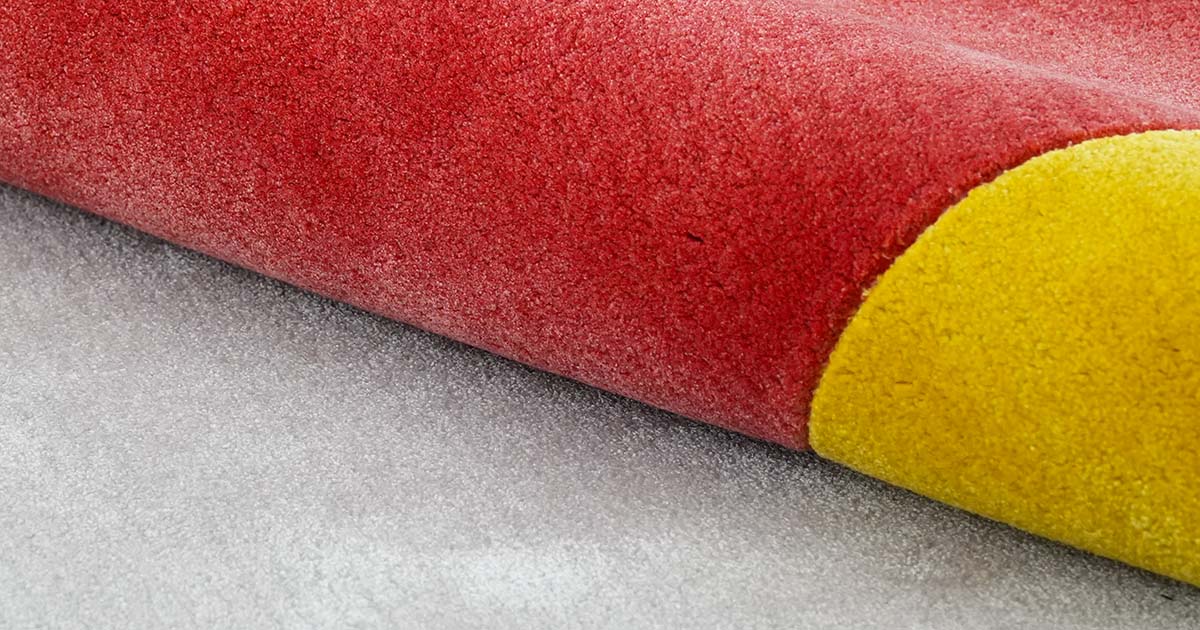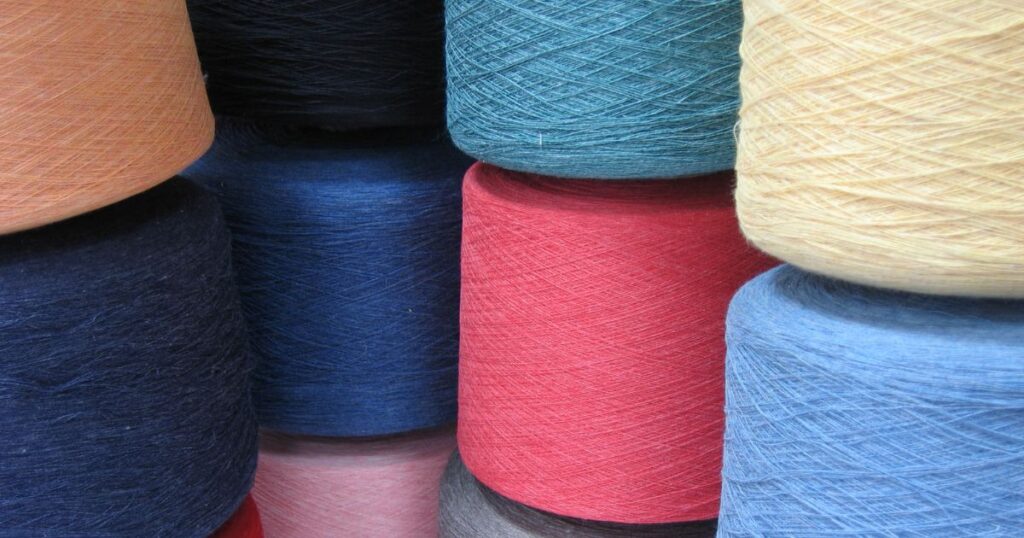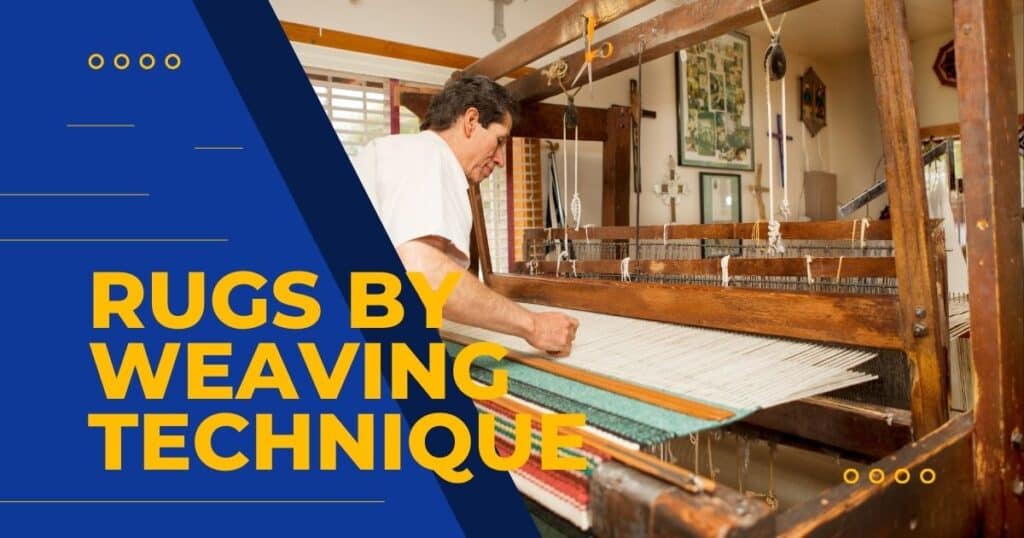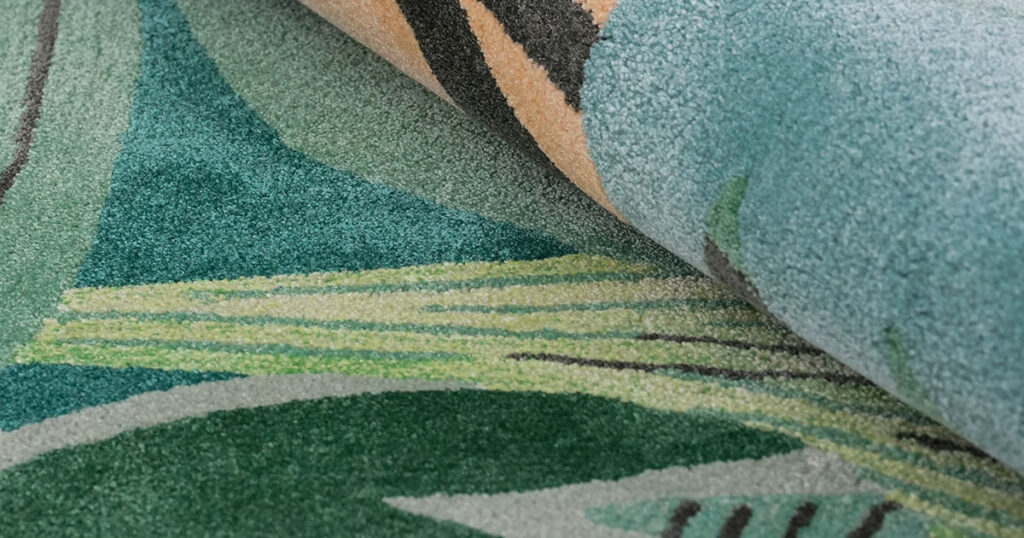Discover the allure and benefits of bamboo silk in tufted rugs.
In this guide, you’ll learn about the unique characteristics of bamboo silk, its eco-friendly nature.
And how it compares to traditional silk and wool.
Find out why bamboo silk is becoming a popular choice for luxurious rugs and how to care for your investment.
What Is Bamboo Silk?
Bamboo silk is a marketing term for a type of rayon made from bamboo cellulose. It’s essentially viscose derived from bamboo – where bamboo stalks are processed to extract cellulose, which is then turned into fiber using a similar process as regular viscose.
The resulting fiber has a silky look and feel, hence the name “bamboo silk.” While it’s not actual silk from silkworms, it aims to replicate silk’s qualities. Bamboo silk is prized for being a more renewable source of rayon (bamboo grows incredibly fast) and is often considered slightly improved in performance over generic viscose, with marginally better durability and cleanability than standard viscose.
How Bamboo Silk Is Made
Bamboo silk production starts with bamboo plants. The bamboo is harvested, and the fibrous pulp is extracted from the stalks. This pulp is then dissolved in a chemical solution to create viscose (or in some cases, it might be processed via a lyocell method, though most “bamboo silk” uses the viscose method).
Despite marketing claims, it’s important to understand that unless explicitly labeled as “bamboo lyocell” (which is rare), bamboo silk typically undergoes the same chemical processing as standard viscose rayon. This means the environmental impact of production can be similar to regular viscose, despite the green marketing often associated with bamboo products.
The viscose solution is pushed through spinnerets to form fibers, which are then spun into yarn. The resulting material is smooth, shiny, and fine, much like traditional viscose. The fiber is durable enough to weave or tuft and can be easily blended with other fibers.
Features & Advantages
Luxurious Silky Finish
Bamboo silk delivers an exquisite, lustrous finish similar to traditional silk. In a tufted rug, it provides high sheen and a sleek touch – soft, glowing, and elegant. The fiber catches light beautifully, making rug patterns shimmer.
Bamboo silk feels cool and smooth to the touch, often described as feeling even cooler than cotton or wool. This can be quite pleasant in warm climates or seasons.
Renewable Resource – With Caveats
A significant advantage of bamboo silk is its sustainability at the source. Bamboo is one of the fastest-growing plants on Earth and can be harvested without replanting (it regrows from its roots). It also requires less water and no pesticides.
The cellulose source is 100% renewable and very eco-friendly to cultivate. No animals are involved (unlike real silk), and bamboo crops help sequester carbon.
However, bamboo silk presents a mixed environmental story. While the bamboo plant itself is sustainable, the typical viscose process for turning it into fiber involves the same chemical solvents and emissions as any viscose production. The “green halo” in marketing isn’t entirely earned unless the manufacturer specifically uses the cleaner lyocell process, which is rare and usually explicitly labeled as such.
Exceptional Softness and Comfort
Bamboo silk is extremely soft underfoot, arguably even softer than standard viscose. Some users feel that bamboo-based viscose has a slightly finer feel, giving a truly luxurious foot feel. It’s perfect for areas where you might sit or lie on the rug – it won’t cause any itch and feels almost like a satiny fabric.
Excellent Blending Qualities
Bamboo silk blends well with other fibers. It’s often combined with wool (e.g., a rug might be 70% wool, 30% bamboo silk) to marry wool’s strength with bamboo silk’s luster. This ability to easily blend means rug makers can use bamboo silk to highlight portions of a design or create a silk-like sheen on a wool rug.
Cool to the Touch
Bamboo silk rugs tend to feel cool and slick underfoot. For those who find wool too warm or insulating, bamboo silk offers a different tactile experience – almost like walking on a cool tile but soft. This can be particularly pleasant in warm environments.
Limitations to Consider
Delicate Fiber (Not for High Traffic)
Despite some claims of better durability, bamboo silk is still a delicate fiber. It has low resilience, meaning the pile will crush under heavy furniture or foot traffic. The fibers can “crash” or flatten, similar to viscose. Once matted, those areas can look dull compared to the rest of the rug.
Bamboo silk also doesn’t have the tensile strength of wool or nylon, so it wears out faster under friction. For this reason, bamboo silk rugs should be limited to low or moderate traffic settings.
Stain Susceptibility
Spills and stains are enemies of bamboo silk rugs. While light spills might be managed if blotted quickly, anything like wine, coffee, juice, or pet accidents can be very problematic. Bamboo silk will absorb the liquid and can stain with persisting discoloration even after cleaning attempts.
Owners of bamboo silk rugs often report water spots or slight yellowing if the rug gets wet – even plain water can cause yellowing in bamboo silk fibers. For serious spills, professional cleaning is needed, and it’s important to note that even professional cleaning might not fully remove stains from bamboo silk. Some level of permanent marking may remain despite best efforts.
Maintenance Needs
Bamboo silk rugs require careful maintenance. You should vacuum gently without a beater bar and avoid getting them wet when cleaning. Use only a damp cloth with mild detergent for spot cleaning if absolutely necessary.
While some manufacturers claim bamboo silk handles moisture better than regular viscose, you should still treat it as very sensitive. Assume any spill can potentially leave a mark. Always blot (never rub) immediately and perhaps use a fan to dry the area quickly.
Regular professional cleaning can keep them looking good, but that’s an added cost and hassle. Some owners lightly brush their bamboo silk rug to restore nap or reposition it to even out wear.
In terms of everyday use, you might find yourself fussing over footprints or furniture marks. The longevity of a bamboo silk rug is directly tied to this care – neglect or heavy use could make it look shabby relatively quickly.
Bamboo Silk vs. Traditional Silk
Origin
Traditional silk is produced by silkworms (Bombyx mori) that feed on mulberry leaves.
Bamboo silk comes from cellulose fibers extracted from bamboo plants.
Production Process
Traditional silk involves unraveling silkworm cocoons and spinning the filaments.
Bamboo silk uses a chemical process to extract and transform bamboo cellulose.
Properties
Both offer softness, smoothness, and luxury.
Bamboo silk has a texture similar to a blend of cashmere and silk.
Traditional silk is the strongest natural fiber, while bamboo silk is also strong.
Bamboo silk is more environmentally friendly and sustainable.
Bamboo silk is more affordable than traditional silk.
Bamboo Silk vs. Wool
Similarities
Both create beautiful, high-end looking rugs.
Both materials are soft and lustrous.
Differences
Bamboo silk is plant-based; wool comes from sheep.
Bamboo silk has a smoother, silkier feel.
Bamboo silk is usually more affordable than high-quality wool.
Wool has better natural stain resistance.
Wool fibers are more resilient against crushing from furniture.
Common Practices
Many tufted rugs use a blend of 70% wool and 30% bamboo silk to get the benefits of both fibers.
100% bamboo silk rugs work best in low-traffic areas.
Wool or wool-bamboo silk blends are better for high-traffic areas.
Best Uses for Bamboo Silk Rugs
Bamboo silk is predominantly used in high-end, design-forward rugs:
Contemporary Designer Rugs
Modern luxury rugs often feature bamboo silk for a glamorous sheen. These rugs are perfect for upscale residences, boutique hotels, and corporate executive areas where style is paramount and traffic can be controlled.
Transitional Rugs with Soft Sheen
In transitional or traditional designs, bamboo silk can replace mercerized cotton or viscose as the “shiny” component. For example, an updated classic pattern might be 70% wool, 30% bamboo silk – giving a subtle lustrous outline to motifs.
Full Bamboo Silk Rugs
There are rugs that are 100% bamboo silk (or close to it). These are typically solid color or tonal and rely on the play of light for interest. They’re very soft and work best in bedrooms or low-traffic lounge areas.
Hospitality and Commercial Decor
Occasionally, high-end hospitality spaces might use a bamboo silk blend rug for their rich look, though this requires careful maintenance.
Choosing Bamboo Silk Rugs
Choosing the Right Rug
Choose a bamboo silk rug if you want the ultimate silky sheen and are prepared to maintain it with care. It’s an excellent choice for luxury home settings like formal living rooms used occasionally for guests or master bedrooms.
For family homes with kids/pets, consider limiting bamboo silk to adult bedrooms or studies. One strategy is to choose a wool rug with bamboo silk accents to limit the amount of delicate fiber.
Care Tips
Place in low-traffic areas away from direct sunlight
Vacuum gently without a beater bar
Blot spills immediately (don’t rub)
Avoid getting the rug wet when cleaning
Use professional cleaning services when needed
Consider area rugs pads to reduce wear
Rotate occasionally to ensure even wear
Cost Considerations
Bamboo silk tends to be used in higher-end rugs, and while the fiber itself might not be expensive, the rugs often are due to design, brand, and quality of construction. Replacing a bamboo silk rug can be quite costly, so the stakes are high in taking good care of it.
While bamboo silk is more affordable than traditional silk, it’s still considered a luxury fiber and is priced accordingly. Consider this investment carefully, especially if you’re planning to place it in an area where damage is more likely.
Conclusion
If you choose bamboo silk, treat it as you would a priceless silk garment – carefully and gently.
With proper care and realistic expectations about its limitations, a bamboo silk rug can be a worthwhile investment.
Add a touch of luxury to your home.
If you are looking for a custom bamboo silk rug, make sure to drop us a line!




